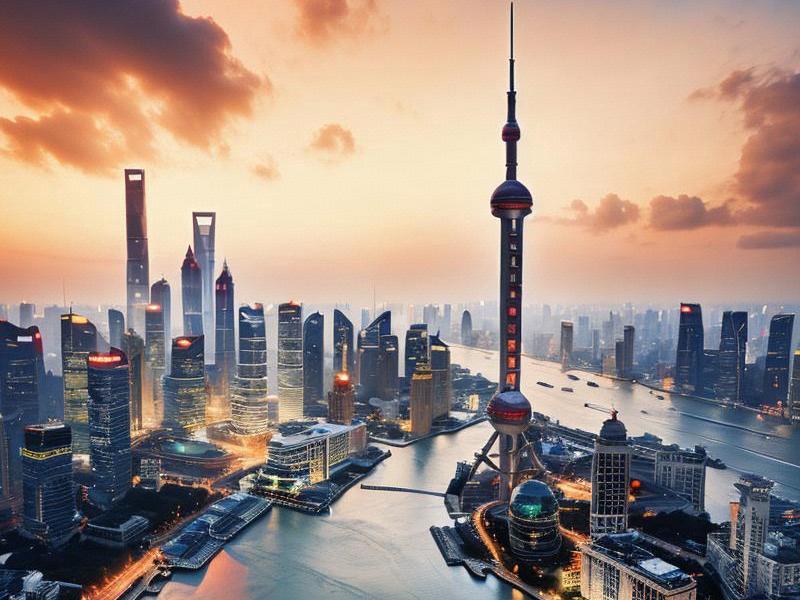This article delves into the fascinating story of Shanghai, a city that has transformed from a modest fishing village into a global metropolis. It explores the city's rapid urban development, its status as an economic powerhouse, and the unique cultural fusion that defines its identity.

In the heart of China, where the Huangpu River meets the East China Sea, lies a city that has captured the imagination of the world: Shanghai. Once a humble fishing village, Shanghai has risen to become a beacon of modernity, a testament to China's economic prowess, and a melting pot of cultures. This article embarks on a journey to uncover the layers of Shanghai's传奇传奇 (legend)(传奇)—legend, exploring its urban evolution, economic significance, and cultural tapestry.
The Urban Evolution of Shanghai
Shanghai's transformation is nothing short of remarkable. In the 19th century, the city was merely a small port town. However, the signing of the Treaty of Nanking in 1842, which opened China to foreign trade, marked the beginning of Shanghai's meteoric rise. The establishment of the International Settlement and the French Concession brought an influx of Western influence, leading to the construction of iconic structures like the Bund and the French Concession's charming streets.
The 20th century saw Shanghai emerge as a global financial hub. The city's strategic location and robust trade networks made it a center for commerce and industry. The bustling streets of Nanjing Road and the vibrant nightlife of the French Concession attracted people from all over the world, creating a cosmopolitan atmosphere that endures to this day.
In recent decades, Shanghai has continued to evolve at an unprecedented pace. The city has undergone massive urban redevelopment projects, including the construction of the iconic Oriental Pearl Tower, the Jin Mao Tower, and the Shanghai Tower, which now stands as the tallest building in China. These architectural marvels symbolize Shanghai's status as a global city and its commitment to innovation and modernity.
Economic Powerhouse
上海龙凤419手机 Shanghai's economic significance cannot be overstated. As one of China's four municipalities directly under the central government, it holds a pivotal position in the nation's economy. The city is home to the Shanghai Stock Exchange, one of the largest stock exchanges in the world, and serves as a major hub for international finance, trade, and commerce.
The Pudong New Area, developed in the late 20th century, has become a symbol of Shanghai's economic ambition. This district houses the Lujiazui Financial District, where some of the world's tallest skyscrapers are located. Pudong is also home to the Shanghai Free-Trade Zone, a pioneering initiative that has attracted numerous multinational corporations and facilitated the growth of China's economy.
Shanghai's port, the Port of Shanghai, is the busiest container port in the world, handling millions of containers annually. This logistical prowess has cemented Shanghai's role as a global trade hub and a key player in international commerce.
Cultural Fusion
What truly sets Shanghai apart is its unique cultural fusion. The city is a harmonious blend of traditional Chinese culture and Western influences, creating a vibrant and dynamic cultural scene. This fusion is evident in the city's architecture, cuisine, art, and lifestyle.
The Bund, with its historic buildings and stunning views of the Huangpu River, is a testament to Shanghai's colonial past. The French Concession, with its tree-lined streets and charming cafes, offers a glimpse into the city's European heritage. Meanwhile, the Yu Garden and the surrounding Old City area showcase traditional Chinese architecture and culture.
上海贵族宝贝sh1314
Shanghai's culinary scene is equally diverse. From the famous xiaolongbao (soup dumplings) of Nanxiang to the delicate pastries of the French Concession, the city offers a culinary journey that caters to all tastes. The vibrant night markets and bustling food streets provide an authentic taste of local life.
Art and culture thrive in Shanghai, with numerous museums, galleries, and theaters showcasing both traditional and contemporary works. The Shanghai Museum, renowned for its collection of ancient Chinese art, attracts millions of visitors each year. The city's contemporary art scene is equally vibrant, with the M50 Creative Park and the Power Station of Art being hotspots for artists and art enthusiasts.
Challenges and Opportunities
Despite its success, Shanghai faces several challenges. Rapid urbanization has led to issues such as traffic congestion, air pollution, and housing shortages. The city is also grappling with the pressures of maintaining its unique cultural identity in the face of globalization.
However, these challenges also present opportunities for innovation and growth. Shanghai is at the forefront of China's efforts to promote sustainable development and smart city initiatives. The city is investing heavily in green technologies, public transportation, and digital infrastructure to address its environmental and urban challenges.
上海花千坊爱上海 Shanghai's commitment to innovation is evident in its role as a leader in the development of China's high-tech industries. The city is home to numerous technology parks and incubators, fostering the growth of startups and driving technological advancements.
A Global City with a Local Touch
Shanghai's unique position as a global city with a strong local identity makes it a fascinating subject of study. The city's ability to blend tradition with modernity, to attract talent and investment from around the world, and to maintain its cultural heritage is a testament to its resilience and adaptability.
As Shanghai continues to grow and evolve, it remains a symbol of China's rise as a global power. The city's story is one of transformation, innovation, and cultural fusion, offering valuable lessons for other cities around the world.
In conclusion, Shanghai's journey from a fishing village to a global metropolis is a story of extraordinary success. Its rapid urban development, economic significance, and cultural fusion make it a unique and captivating city. As Shanghai looks to the future, it continues to inspire and captivate the world with its charm and dynamism.